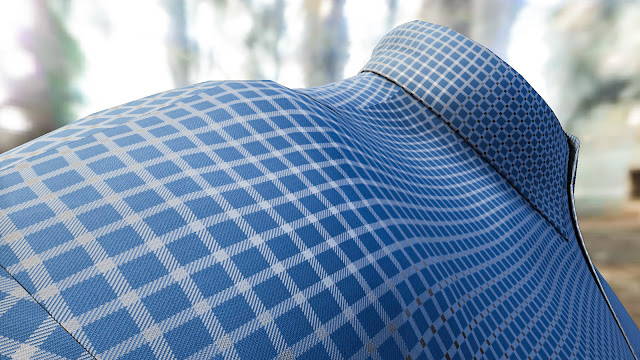Smart Fabrics; Fabrics or Textiles That Can Sense and React to Environmental Stimuli
 |
| Smart Fabrics |
Smart fabrics, also known as smart textiles, smart garments, or smart clothing, are a type of fabric in which electronic devices such as integrated circuits, batteries, conductors, LEDs, and others are embedded to offer an added value to the wearer. Smart textiles can sense and respond to environmental stimuli, including chemical, biological, mechanical, thermal, and magnetic, among others. Thus, smart fabrics are widely used in healthcare, military and defense, fashion and entertainment, architecture, and transportation.
Smart fabrics are made from various materials
such as Kevlar, cotton, nylon, and polyester, among others. Smart textiles can
both perceive or communicate the environmental conditions and can detect and
process the wearer's condition. Smart fabrics are manufactured to include
technologies that provide the wearer with increased functionality. Smart
fabrics are widely used in the healthcare industry and military and
defense. Such fabric is making clinical
trials patient-friendly while providing more precise, real-time data to
healthcare professionals.
In the coming future, doctors may recommend
smart fabrics to monitor for vital signs and more. Moreover, textile-based materials equipped with
electronics and nanotechnology play a vital role in the development of
technologically advanced military materials and uniforms. Active intelligent textile systems, integrated to
electronics, can help improve the soldier’s performance by sensing, adopting,
and responding to a situational combat need allowing the combat soldiers to
continue their mission. They are used to
enhance military functionality.
For example, in June 2021, the U.S. Army and Massachusetts
Institute of Technology (MIT) developed a technology to bring human troops one
step closer; smart clothing fibers that can transform army uniforms into
wearable computers. A fiber can sense,
analyze, store, and infer activity when sewn into a piece of clothing. Moreover,
the fibers can warn human troops of dangers ahead, such as chemical weapons
attacks, and mark the wearer's location.



Comments
Post a Comment